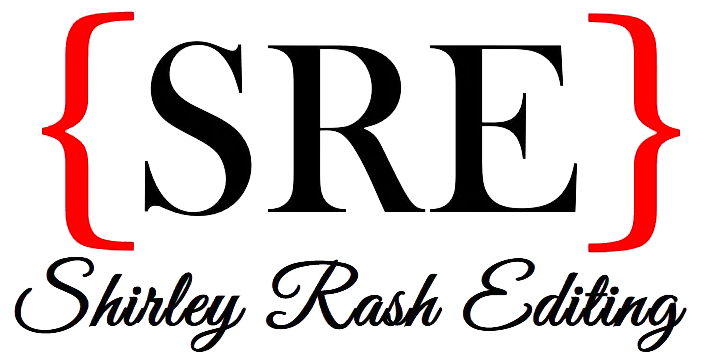I listen to a lot of music through the course of my days, and I certainly listen to a lot of it as I edit. I have specific songs and playlists and artists for certain editing tasks. What I listen to when I am reading is very different from what I listen to as I’m double-checking my work right before sending the manuscript back. I even have specific songs I listen to just for working on citations.
If I’ve done any editing over the years for you, rest assured that there’s a good chance I was listening to murder ballads and/or Nick Cave in the latter stages of editing.
I love murder ballads as a genre of song. (This will not surprise anyone who knows me.) They’re certainly a significant aspect of the music culture of my native Appalachia and fit in nicely with my interest in true crime and mysteries.
Nick Cave’s 1996 Murder Ballads was the first album I ever listened to entirely devoted to the subject. In the years since then, I’ve developed other favorite murder ballad album compilations and songs that I listen to more frequently. (Like Bob Frank and John Murry’s haunting World Without End or any number of variations on the eerie traditional ballad “Twa Sisters.”) And truthfully I listen to Nick Cave’s newer non-murdery albums a lot more than I do Murder Ballads now.
But I still have a soft spot for “Song of Joy,” the first song on Murder Ballads, especially in late October, and every year as Halloween gets closer, I often have that song on repeat for days.
I particularly love introducing other people to “Song of Joy.” In fact, if you’ve never listened to it, go ahead and give it a try. I’ll wait.
Did you listen to it all the way through? Now’s your last chance before I spoil the entire song.

Spoilers Past This Point
My favorite part of watching other people listen to the song for the first time is seeing that horrified flash of recognition when they start to realize the narrator is the one who killed his whole family, not some unidentified stranger.
As I was making my way through the song again this weekend as part of my October routine, it dawned on me that the song is also a wonderful mini-lesson on writing.
Of course, a song is a very different medium from a book. Songs have music and vocals to add to the atmosphere, but books also have a lot more time to develop their material, for starters. But there are some general lessons that apply to either, and what we’re going to discuss now is just as relevant whether you’re writing songs or novels or narrative nonfiction manuscripts.
Just as a note, I’m not going to directly quote the song lyrics since that can be a minefield regarding copyright permissions, but I do encourage you to read through the lyrics. The only parts of the song that I’ll be directly quoting are the places where the song itself quotes John Milton because his work is public domain.
Show Don’t Tell
I think “show don’t tell” is perhaps one of the most misunderstood “rules of writing.” As I always tell my authors, you can’t literally show all the time when writing. If you did, your manuscripts would be unwieldy, thousands of pages long and full of tedious detail that dulls the impact of the story. When everything is equally emphasized, nothing stands out.
That being said, never showing renders a manuscript flat. A story that leaves nothing to the imagination because it directly tells you everything worth knowing is not a very engaging story, in my opinion. There’s a balance to be achieved between telling and showing.
Sometimes, though, writers will just tell the reader that a character is a good guy (or a bad guy) or that two characters get along (or don’t get along). If these aren’t very significant characters, that’s probably not a big deal and can actually be an example of telling being used legitimately. But as a general rule, you want to do more showing than telling, and if the question of whether the character is good or bad or whether the relationship between two characters is positive or negative is central to the story, you can’t just tell the reader these things and never demonstrate what it is that makes it so.
Never once in “Song of Joy” does Cave ever directly tell listeners, “The guy telling you about how his family was slaughtered is the culprit, and by the way, he’s probably going to kill another family once he finishes singing.” Nor does he ever directly tell you, “This is an incredibly creepy song.”
And he doesn’t have to because he wonderfully shows all of that in every stanza of the song. Exactly how does he show it?
Part of establishing the creepy tone is simply the descriptive language he uses to set the scene. It’s loaded with dark atmosphere. One of my favorite lines is when he asks to be admitted to his unnamed audience’s home for the night as he poetically describes the vultures, wolves, and snakes lurking outside. That’s a lot more evocative than just directly telling us that it’s dark and creepy out.
As for how he shows us the narrator is the killer. . . .

Unreliable Narrator
Cave uses the trope of an unreliable narrator to devastatingly good effect in the song.
Perhaps the biggest clue that he is unreliable—and a great instance of showing rather than telling—is how he denies being familiar with John Milton or Paradise Lost but effortlessly quotes Milton at least twice in the course of his narration.
As he explains, the killer of his family leaves quotes from the text at his crime scenes. When his family was killed, “His red right hand” was the Milton quote left behind. He also explains that he’s just repeating what he has been told about where the line comes from, implying he himself has no familiarity.
But before he ever launches into the story of murder or denies being familiar with the text, he quotes Paradise Lost without comment or attribution: “Farewel happy Fields/Where Joy for ever dwells: Hail horrours, hail.”
And toward the end, after he insinuates he himself is not familiar with Milton’s work, he adds another Milton quote without comment or attribution: “The Sun to me is dark/And silent as the Moon.”
That’s textbook “I’m the killer!” information right there.
Even if you’re not as well up on Milton as the narrator/killer, there’s quite a bit that hints that something is off with the story. [Confession: I hadn’t read any Milton when I first heard the song, but I still thought there was something very odd about the way he carefully clarified he wasn’t familiar with Paradise Lost but that the killer was.]
Our narrator makes much of the fact that his wife Joy is depressed and unhappy after their marriage early in the song, but there is never any acknowledgement of his own role in the family dynamics or of any efforts to help Joy. It’s not exactly the cozy domesticity that you’d expect from someone recounting their long-lost family.
He also betrays a little too much knowledge of what went on in that house on that fateful night, even though he emphasizes that he himself was not home until late.
Sometimes, writers craft an unreliable narrator but only ever inform the reader they’re unreliable at the very end, with no previous evidence that we should be questioning the narrator’s take on anything. That’s not an effective use of the trope and actually takes all the fun out of it for your readers. If you really want to take readers on that journey, you need to be planting clues along the way that there is something amiss. Ideally, you’ll still take the reader by surprise, but this isn’t a device one can use without playing fair and showing the truth all along.
Cave’s narrator in “Song of Joy” is a wonderful example of an unreliable narrator—there are numerous clues that he is not what he seems throughout the entire song—but it doesn’t usually hit the listener until nearly the end of the song. And at no point does Cave ever directly tell his audience that the narrator is unreliable. He shows it.
Point of View Discipline
Another aspect of the song that is particularly well done is that Cave embraces the limitations of his chosen point of view (POV).
POV is often something that writers struggle with, and in my experience, it can be a symptom of a deeper issue of focus and a lack of real certainty or conviction of whose story is being told.
That is not a problem in “Song of Joy.” Cave has a razor-sharp focus on the story in question—it’s the narrator’s story, and we never once veer out of his perspective.
What we’re given is a one-sided conversation between the narrator and someone whose house he is asking to stay in for the night. We know that they’re actively conversing because there are numerous lines acknowledging he is speaking to someone directly.
For instance, when he first alludes to the murder, he notes the other man’s flicker of interest in the story. At the end (which to me is easily the most chilling part of the song), he repeatedly invokes the presence of the other man and directs repeated questions at him, which culminates in him asking for permission to stay the night.
It would be tempting for a writer to break POV here and incorporate the perspective of this poor bystander who is probably just now having the same realization as the song’s audience—that he’s invited a dangerous murderer into his home
I’m not going to say that there isn’t an equally chilling song potentially lurking in that man’s exclusive perspective as he realizes his seemingly grief-stricken visitor is actually a family annihilator or even that there isn’t an equally terrifying song to be had out of juxtaposing one man’s perspective with the other as that realization grows. Those are valid approaches to the story and storytelling and have their own merits.
However, those POVs are not necessary to have the effect that Cave is going for—we don’t need to know whether the man the narrator is addressing is terrified or realizes what dark horror he has unleashed by letting this man into his home.
What makes “Song of Joy” such a viscerally haunting song is that we, as listeners, fill in our own reaction. As many times as I’ve listened to it, I always have the urge to shout “DON’T LET HIM IN!” at the end! Incorporating the other man’s realization that he shouldn’t have done so isn’t going to add anything to the horror we experience as what is really unfolding dawns on us and would, I suspect, dissipate the marvelous tension the song generates.
Rather than fighting the perceived limits of the POV he’s chosen, Cave has embraced those limits and used them to his advantage, which is always my advice to writers when they choose these narrative structures, including a first-person POV.
~~~~
Perhaps I should apologize in advance if this post leaves you listening to “Song of Joy” on repeat for days, but I’m not actually sorry if that happens! 😊 I feel like I still notice something new every time I hear it.
~~~~
Next time, I’d like to shift gears and talk about how thinking in readers’ advisory terms can be a great tool when you’re pitching your book to agents and/or publishers. In the future, I’d also like to talk more about some of the issues I’ve raised in this post about POV and focus in manuscripts and how to embrace the limits of certain narrative structures.
Until then, what’s your favorite scary song? Are you a fellow fan of Nick Cave and/or murder ballads? Do you have any books, songs, movies, or TV shows that you revisit every Halloween? Are there any other writing tips you’re interested in hearing more about?





